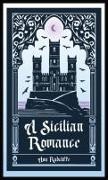Read more
Julia and Emilia find themselves at the mercy of their tyrannical father, Marquis Mazzini. When he arranges a marriage for Julia with someone she does not love, she takes her fate into her own hands in order for her to be with her true love, Hippolitus. Through secret passages and encounters with the supernatural within a crumbling Sicilian castle, Julia discovers dark family secrets. Together, the sisters must face numerous challenges relying on only their courage and wit! "A Sicilian Romance" is a gripping Gothic novel that explores love, power, and personal freedom.
About the author
English novelist Ann Radcliffe (née Ward; 9 July 1764 - 7 February 1823) is credited with creating Gothic fiction. She was the only child of haberdasher William Ward and Ann Oates and was born in London. Young Radcliffe started writing, and she became well-known for her atmospheric, suspenseful books that mixed aspects of romance and horror. She wed writer and editor William Radcliffe in 1787. She achieved enormous popularity with her two well-known works, "The Mysteries of Udolpho" (1794) and "The Italian" (1797). Strong characters, frightening locations, and evocative descriptions were all hallmarks of Radcliffe's books. She received accolades for using psychological suspense rather than supernatural components to create a feeling of horror. While Radcliffe was alive, she was quite well-liked, but certain literary groups also had criticism for her. Her writings were criticized for being too romantic and sensational. Even yet, Radcliffe's books impacted the Gothic subgenre and provided authors like Jane Austen and Edgar Allan Poe with inspiration. Early in the 19th century, Radcliffe's writing career came to an end, and she had a tranquil life until her death in 1823. Even today, people acknowledge and appreciate her influence on literature and her role in the development of Gothic fiction

